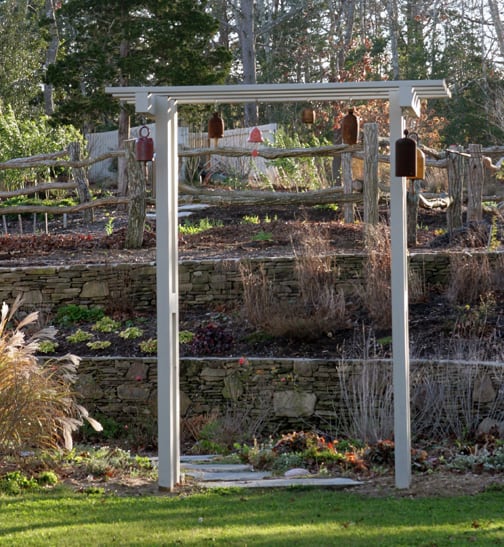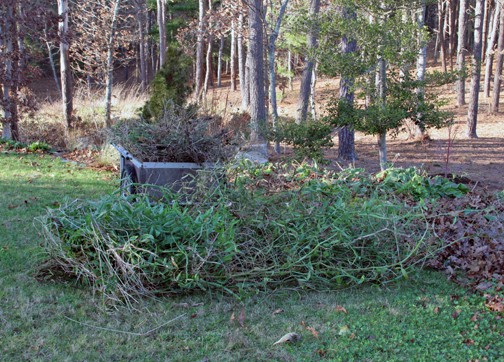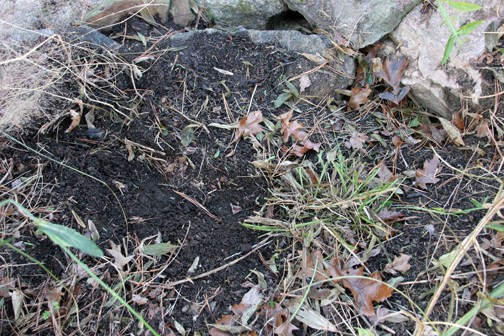Report From PIA – December 3
This afternoon I arrived home around 2:30, and promptly sat down with my laptop, wondering what I should write about today. As I sat thinking, the small, wisest part of me said, “You won’t find something unless you go out and look.” So I went outdoors to work in the garden.
It’s very windy today, but mild for December, so I took the garden cart to the lakeside perennial bed and began cutting stalks. The first thing that struck me was that the wind was strong enough to ring one of the smaller bells on arbor. Most of the time the sound of the wind blowing through trees was louder than the bell, and I appreciated that it was nature, not a manmade sound, that predominated. In fact, the occasional soft tinkling mixed in with more predominant windy gusts seemed just right.
As I cut the perennial stems down, I discovered another reason for clearing the garden before winter. If you read my postings on Nov 30th and Dec 1st, you know that I’ve been talking about the benefits of clearing a perennial garden in the fall, and the advantages of leaving those plants until spring.
One of those reasons for leaving the garden alone is that the spent plants provide shelter and food for wildlife. Today, I found another reason to remove the perennials: they provide shelter and food for wildlife…just not the sort of wildlife I want to encourage.
Two years ago I planted perennial sweet peas on the edge of this bed, intending that the plants would cascade over the stonewall and soften the massive boulders. They did tumble over the rocks, but they also grew into a dense mat that covered large sections in the back of this bed. When I walked up to snip the old sweet pea stalks, and pull the mass out of the garden, my feet sank into the ground. Something was tunneling underneath the surface.
Once the sweet pea foliage was cleared, I could see entry holes and surface gullies where the animals have been traveling. Moles, voles or chipmunks? I’m not sure, but the little darlings have devoured the roots and crown of all of the Baptisia in this area. This is not what I had in mind when I spoke of the wisdom of providing food and shelter for wildlife.
Next year I’ll dig the sweet peas and plant them elsewhere. The rootless stalks of Baptesia got taken to the compost, and instead of replanting these rodent delicacies, I’ll plant some Digitalis, Nicotiana, or something else that’s poisonous.
In case moles are at work, I dropped some of the Mole Worms, sent to me by the Liquid Fence people, down the holes and in the obvious tunnels. I’ll use some other repellants such as cayenne pepper as well, and clearing the plants from this area will help expose the critters to local predators such as owls, skunks, coyote and fox.
I’m not happy that some of my plants have been eaten, or that there is a warren of tunnels that create ankle-turning spongy areas throughout this garden. But I’m not willing to declare all out war, and seed this garden with synthetic poisons.
I am hoping that my strategy of bringing the area into balance will help. I want the human presence in my garden to blend as seamlessly, and as secondarily, as the gentle tinkling of a bell amid a robust, gusting wind.

It would take a gale to ring the heavy metal bells, but today the wind rang the coral ceramic bell with ease.

In front of the cart is the foliage from just one perennial sweet pea plant.

The dark areas are gullies - critter highways, really - that were under the sweet pea stems and leaves.

